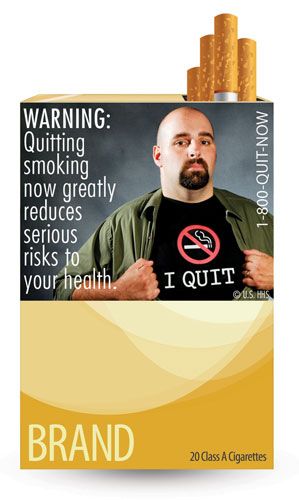Article
FDA Mandates Graphic Cigarette Label Warnings
Author(s):
In an effort to draw attention to the dangers of tobacco, the FDA has mandated the inclusion of graphic warnings to cigarette packs and advertisements.
Click to enlarge.









In an effort to draw attention to the dangers of tobacco, the FDA has mandated the inclusion of graphic warnings to cigarette packs and advertisements. Early Tuesday morning the FDA released its final selections of the 9 graphic health warnings that are required to appear on every cigarette pack and ad by September 2012. One of the 9 images depicts a man with a large cut down the center of his chest with the caption reading, "Smoking can kill you." Another shows a woman holding a baby while smoke billows around them—the caption reads, “Tobacco smoke can harm your children.”
The new warnings are required to be large enough to cover the top half of the front and back of cigarette packages. The labels will also include the number for the national toll-free quit line, 1-800-QUIT-NOW.
This change marks the first time in 25 years cigarette packaging will undergo a major aesthetic alteration. Matthew L. Myers, president of the Campaign for Tobacco-Free-Kids, called the new label requirements the “most dramatic change in cigarette warnings in the history of the United States. For the first time, the warnings are large enough to be seen and graphic enough to catch the attention of consumers.”
The label changes are a part of the Family Smoking Prevention and Tobacco Control Act, signed by President Barack Obama in 2009. This Act is the first that gives the FDA significant control over tobacco products distributed within the United States.
The goal of these new warnings, as with other smoking prevention programs, is to decrease overall smoking rates. The FDA said in a statement that these graphic labels “will have a significant public health impact by decreasing the number of smokers, resulting in lives saved, increased life expectancy, and improved health status.”








